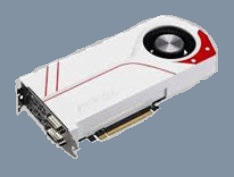


© Estwald ISI 2015 - 2025


Estwald’s
Information System Infrastructures

Graphics
Graphics boards are manufactured by a multitude of companies from Asus to Zotac.
But they all use graphics processors from primarily two manufacturers, AMD who bought out
ATI specifically for its graphics engine expertise, and NVidia; although special purpose
graphics solutions are made by others such as Matrox.
These two graphic processor unit (GPU) producers are highly competitive and tend to
flip-flop every year or so as to which has the best GPU for the money. Right now NVidia has
the lead but not because of processing speed or price. Rather its lead is based on a drastic
improvement in power efficiency. Assuming everything else is relatively equal the NVidia’s
graphics processor operates at about 60% of the power of its AMD counterpart. This is also
one of the myriad problems AMD faces in its APUs. Intel processors use about 55% of the power of AMD.
The board manufacturers try to distinguish themselves using several methods, quality of associated components; speed
by overclocking memory and the GPU; cooling solutions that silence the fans; amount of memory; types and number of outputs;
and warranty. Depending on the GPU family member, clock speed, and additional features a graphics card can run from $20 to
$2000 but the typical cost is between $150 and $600.
















